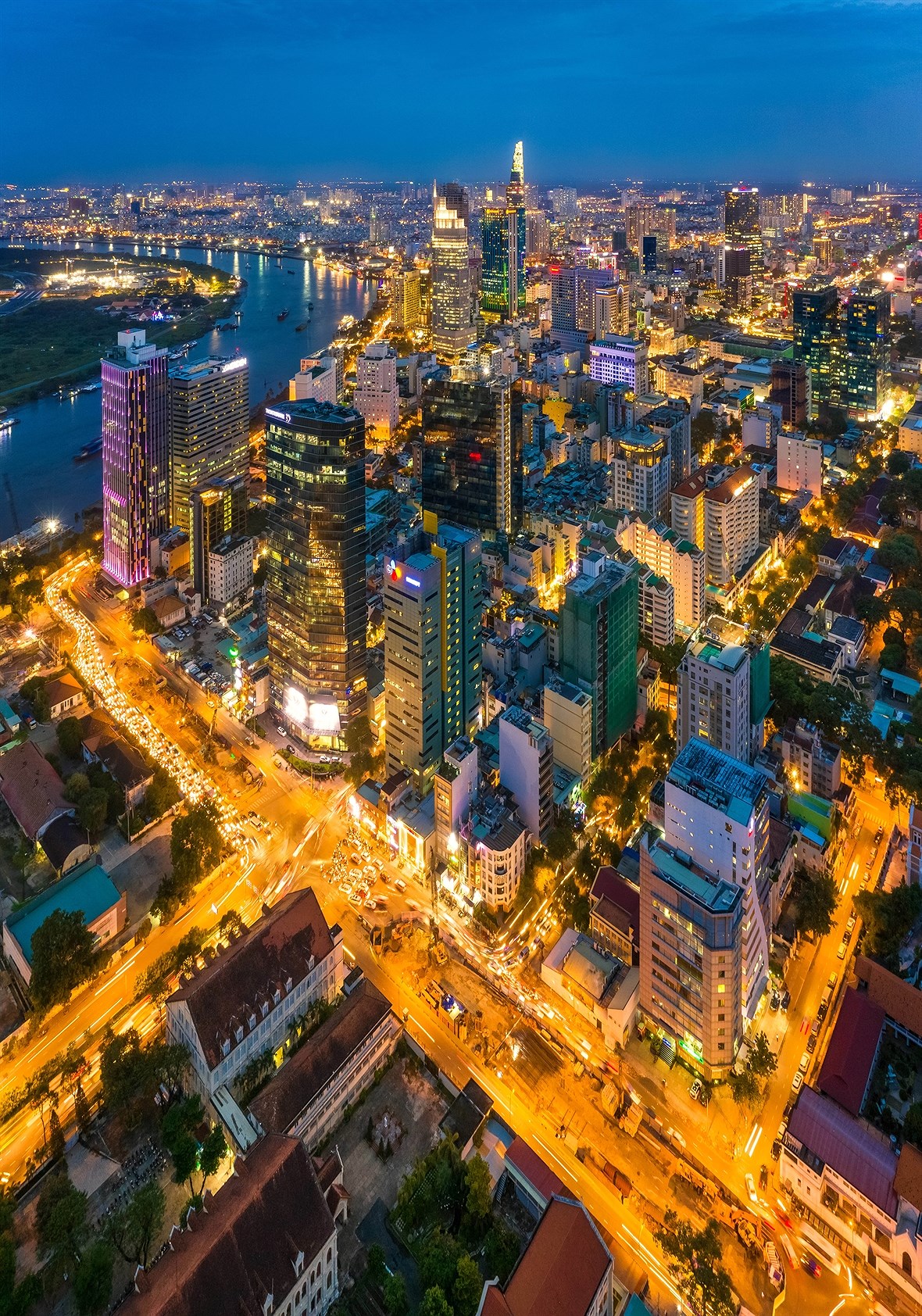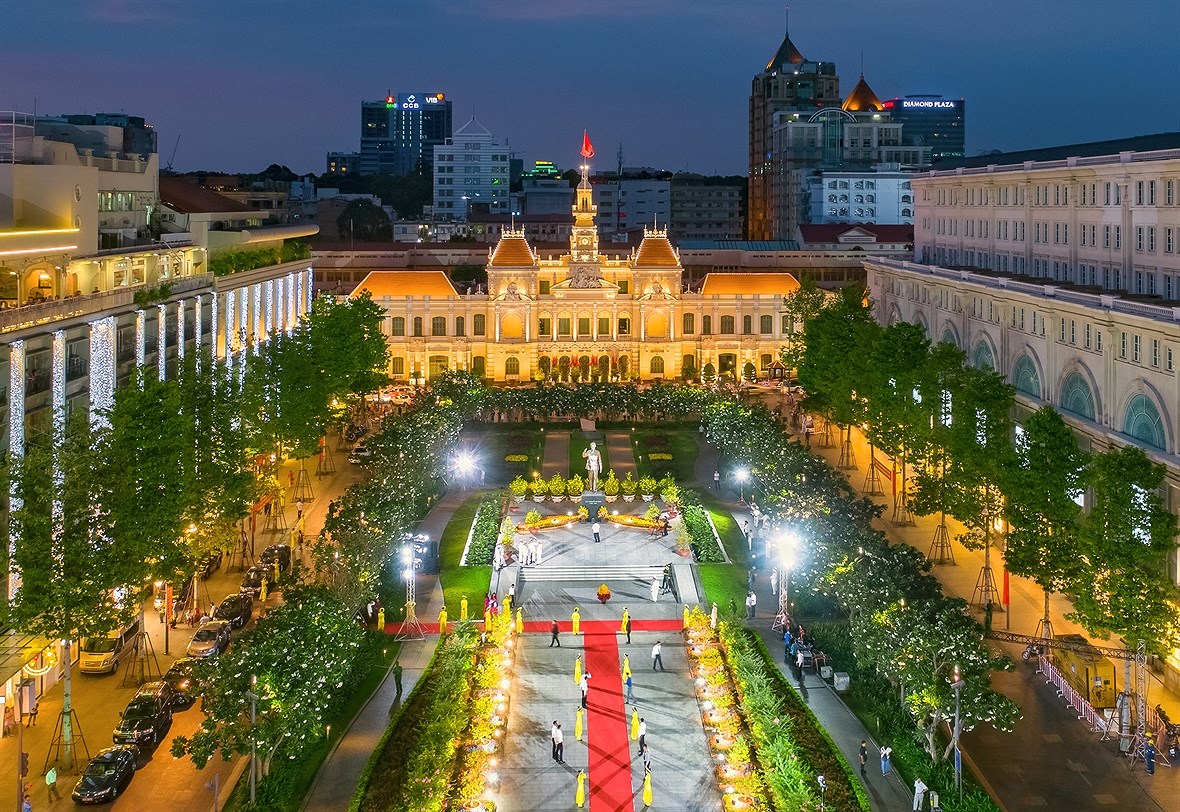Ho Chi Minh City, a modern metropolis
Forty-five years after the country’s reunification, Ho Chi Minh City has transformed from a war-damaged city into a major economic hub in the country and Southeast Asia. With a population of around 13 million, the city aims to become a smart and modern urban area.
 Ho Chi Minh City seen from the Saigon river (Photo: VNA)
Ho Chi Minh City seen from the Saigon river (Photo: VNA) Nha Rong wharf was originally a big trading port in the South, built in 1864 by the Saigon River. It is the place where late President Ho Chi Minh embarked in 1911 to seek a path to national salvation. It attracts millions of Vietnamese and foreign tourists every year (Photo: VNA)
Nha Rong wharf was originally a big trading port in the South, built in 1864 by the Saigon River. It is the place where late President Ho Chi Minh embarked in 1911 to seek a path to national salvation. It attracts millions of Vietnamese and foreign tourists every year (Photo: VNA) Cat Lai port located by the Dong Nai river is one of the key ports of Ho Chi Minh City’s port system (Photo: VNA)
Cat Lai port located by the Dong Nai river is one of the key ports of Ho Chi Minh City’s port system (Photo: VNA) Phu My cable bridge, inaugurated in 2009, connects District 2 with Districts 7 and 9. It is one of the routes connecting Thu Thiem new urban area and Phu My Hung urban area (Photo: VNA)
Phu My cable bridge, inaugurated in 2009, connects District 2 with Districts 7 and 9. It is one of the routes connecting Thu Thiem new urban area and Phu My Hung urban area (Photo: VNA) Located in the heart of Ho Chi Minh City, the Independence Palace attracts a large number of international and domestic tourists.It is also a place to host high-ranking delegations of the state and party, and international and domestic workshops (Photo: VNA)
Located in the heart of Ho Chi Minh City, the Independence Palace attracts a large number of international and domestic tourists.It is also a place to host high-ranking delegations of the state and party, and international and domestic workshops (Photo: VNA) Cat Lai T-junction, the gateway to the city (Photo: VNA)
Cat Lai T-junction, the gateway to the city (Photo: VNA) Ho Chi Minh City by night (Photo: VNA)
Ho Chi Minh City by night (Photo: VNA) District 1 is considered the busiest district, with the highest living standard in all aspects. Dong Khoi street and Nguyen Hue pedestrian street are the major business streets in the district (Photo: VNA)
District 1 is considered the busiest district, with the highest living standard in all aspects. Dong Khoi street and Nguyen Hue pedestrian street are the major business streets in the district (Photo: VNA) The municipal People's Committee Headquarters is one of the most iconic classical buildings of the city (Photo: VNA)
The municipal People's Committee Headquarters is one of the most iconic classical buildings of the city (Photo: VNA) Pham Van Dong Boulevard belongs to Ho Chi Minh City’s ring road No.1, starting from Tan Son Nhat airport to Linh Xuan crossroad, Thu Duc district (Photo: VNA)
Pham Van Dong Boulevard belongs to Ho Chi Minh City’s ring road No.1, starting from Tan Son Nhat airport to Linh Xuan crossroad, Thu Duc district (Photo: VNA) Vietnam’s Motor Show, a prestigious event which is regularly held in Ho Chi Minh City, attracts world famous car brands (Photo: VNA)
Vietnam’s Motor Show, a prestigious event which is regularly held in Ho Chi Minh City, attracts world famous car brands (Photo: VNA) Phu My Hung is the showcase of a modern urban neighborhood in Ho Chi Minh City. It has a fresh living environment (Photo: VNA)
Phu My Hung is the showcase of a modern urban neighborhood in Ho Chi Minh City. It has a fresh living environment (Photo: VNA)